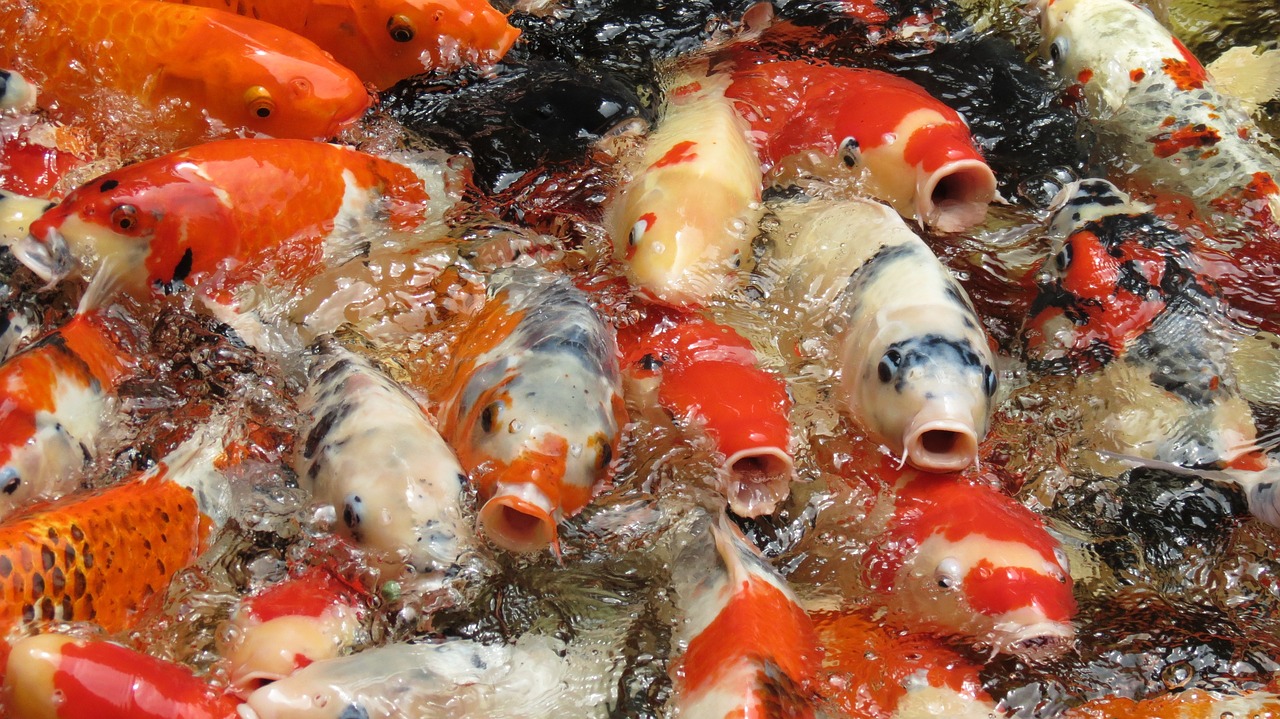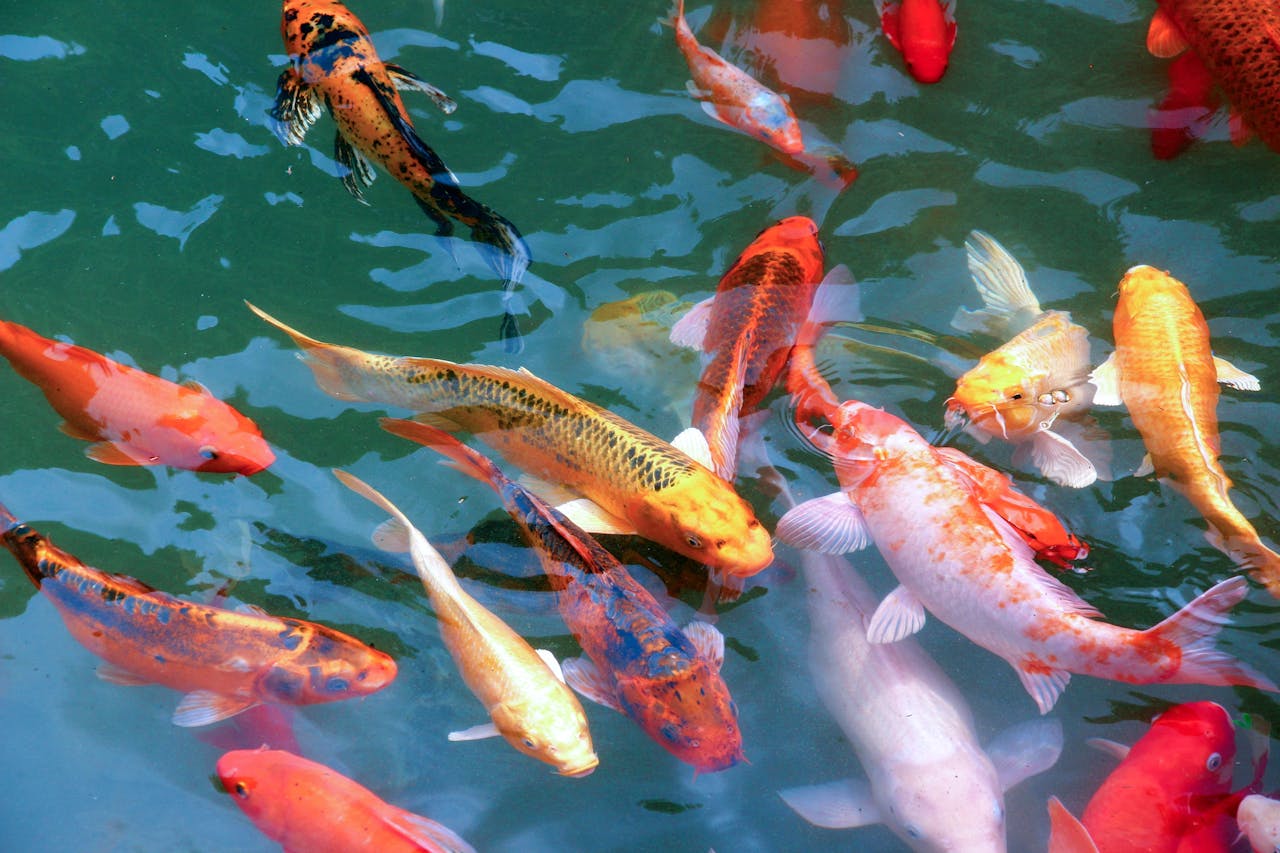
Introduction
Importance of Keeping a Koi Care Journal
As a koi enthusiast, I’ve found that maintaining a koi care journal is immensely helpful. It captures my observations, notes, and experiences, ensuring I never miss a detail about my beloved koi fish. This journal becomes a treasure trove of information, making it easy to track changes in behavior, water quality, and overall health. For instance, I can quickly refer back to how certain feeds affected the growth of my kohaku. By documenting everything—from feeding schedules to water temperature—it’s easier to identify trends and make informed decisions.
Benefits of Involving the Whole Family
Involving the entire family in koi care not only strengthens bonds but also turns fish-keeping into a collective learning experience. Here are some benefits of sharing this hobby:
- Encourages teamwork: Everyone contributes to the care of the koi.
- Educational opportunity: Kids learn responsibility and respect for living creatures.
- Fun family activity: Engaging in tasks like water testing together can be a blast!
I’ve seen how my children enjoy feeding the koi and eagerly help with water changes, creating cherished memories for all of us. 🐟
Setting Up Your Koi Care Journal
Choosing the Right Notebook
Now that you understand the value of a koi care journal, it’s time to pick the right notebook. Personally, I prefer a sturdy, bound journal with plenty of space for writing. Here are a few options to consider:
- Classic Notebook: A simple ruled or dotted notebook allows for flexibility in how you structure your notes.
- Binder System: Using a binder makes it easy to rearrange sections and add pages as needed.
- Digital Alternatives: If you prefer tech, consider a note-taking app that syncs across devices.
Choosing a notebook that feels good to you will make documenting your koi’s journey more enjoyable!
Organizing Sections for Different Aspects
Once you have your notebook, it’s important to create a system that covers all aspects of koi care. I suggest organizing it into sections such as:
- Daily Care: Feeding schedules and water observations.
- Health Records: Notes on any medical treatments or health issues.
- Seasonal Tasks: Reminders for winterizing your pond or spring maintenance.
This structure helps me quickly locate the information I need, making my koi keeping experience much more efficient. Don’t forget to personalize your journal with stickers or drawings of your favorite koi fish! 🐠
Daily Koi Care Routine
Feeding Schedule and Observations
Keeping a consistent feeding schedule is crucial for the health of your koi fish. I found that feeding them twice a day works well, splitting their portions into morning and evening meals. Here’s how I track it:
- Morning Feeding: 8 AM – High-protein pellets.
- Evening Feeding: 5 PM – Vegetables or special treats.
I also jot down any observations about their eating habits, such as changes in appetite or lengths of feeding time. This helps me stay attuned to their health and well-being.
Water Quality Monitoring and Testing
Water quality is vital for koi health, so I make it a routine to test my pond water weekly. I check for:
- pH levels
- Ammonia and nitrite levels
- Temperature
Through my journal, I can see trends over time—like seasonal fluctuations—and quickly address any concerns. Regular monitoring ensures my koi thrive, and it’s always satisfying to see those clear, healthy waters reflecting happy fish! 🌊🐟
Seasonal Koi Care Tasks
Preparing for Winter
As the leaves start to fall and temperatures drop, preparing for winter becomes crucial for the health of my koi. I always make sure to do the following:
- Remove Debris: Clear the pond of leaves and debris to prevent decay.
- Test Water Temperatures: If it dips below 50°F (10°C), I reduce feeding, as koi metabolism slows down.
- Inspect Equipment: Check pumps and heaters to ensure they function correctly during colder months.
I truly cherish the beauty of watching my koi swim lazily through the crisp autumn air, knowing they are well-prepared for winter.
Spring Pond Maintenance
Once spring arrives, excitement fills the air as I prepare for a busy season of growth! I kick off spring pond maintenance by:
- Clean and Refill: Cleaning the pond and replacing a portion of the water invigorates the ecosystem.
- Check Filters: Ensuring filters and pumps are in top shape promotes a healthy environment.
- Planting: I introduce new aquatic plants to provide shade and shelter for my koi.
These tasks not only enhance the beauty of my pond but also kickstart a vibrant, healthy season for my koi fish! 🌷🐠
Explaining various japanese koi fish varieties to the family members will increase an interest in them to watch.
Health and Medical Records
Tracking Koi Health Observations
Keeping a close eye on the health of my koi is an essential part of my care routine. I’ve found that maintaining a dedicated section in my journal for health observations is invaluable. I jot down:
- Behavioral Changes: If I notice any koi being less active or isolating themselves.
- Physical Signs: Any changes in skin color, scale condition, or signs of parasites.
- Feeding Habits: Decreases or changes in appetite can signal health issues.
By documenting these observations, I can quickly identify patterns and take action before minor issues escalate.
Medication and Treatment Logs
When health issues arise, I rely on clear records of any treatments or medications. Here’s how I keep things organized:
- Medication Name: Include dosages and purpose.
- Start and End Dates: Track the treatment duration.
- Observations During Treatment: Note any effects or changes in behavior.
For instance, when one of my koi showed signs of fin rot last summer, I treated it with a medicated food. By logging everything, I could evaluate what worked and apply that knowledge in the future. Keeping accurate health records not only boosts koi wellness but also strengthens my ability to care for them! 🐠✨
Learning and Growing Together
Educational Activities for Children
Involving children in koi care fosters a wonderful environment for learning! I’ve discovered that certain activities not only teach them about responsibility but also spark their curiosity. Here are a few fun and educational ideas I’ve tried:
- Koi Watching: Spend time observing koi behavior and discussing their different species and colors. It’s amazing how much they love identifying the beautiful kohaku among them!
- Water Testing: Kids can help with water quality tests using kits. This hands-on activity makes learning about chemistry engaging.
- Creating a Poster: They can create informative posters about koi for our backyard, which also helps them learn while being creative.
Sharing Responsibilities in Koi Care
Sharing responsibilities has transformed our koi-keeping experience into a family bonding activity. Each member has a role, which I truly appreciate:
- Feeding Duty: My younger child enjoys measuring out the perfect amount of food each morning.
- Cleaning Tasks: The older kids help with water changes and removing debris on weekends.
- Health Checks: Together, we inspect the koi and keep an eye out for any health changes.
This collaborative approach not only lightens the workload but also teaches the kids the importance of caring for living beings. Plus, it’s rewarding to see them develop a genuine love for our koi family! 🐟💕
Reflecting on Progress
Tracking Koi Growth and Development
Regularly tracking the growth and development of my koi has been a rewarding experience. I make it a point to note their size, colors, and any physical changes in my care journal every few months. To make this simple, I record:
- Measurements: I use a soft measuring tape to track their length.
- Photos: Taking before-and-after photos helps visualize their growth over time.
- Behavioral Changes: Noticing how their personalities evolve contributes to my understanding of them.
These records allow me to appreciate how my kohaku koi fish has transformed, both in size and beauty.
Evaluating Successes and Challenges
Reflecting on our journey involves acknowledging both our successes and challenges. At the end of each season, I review:
- Successful Practices: What methods worked well? For instance, identifying the best feed for enhancing color.
- Challenges Faced: What problems arose? I learned a lot during a fungal outbreak last year and documented how we resolved it.
This evaluation process not only celebrates our accomplishments but also prepares us for future challenges, ensuring continuous improvement in our koi-keeping adventure! 🐠🌟
Engaging with the Koi Community
Participating in Koi Shows and Events
Engaging with the koi community has been a fulfilling aspect of my koi-keeping journey. One of the highlights is participating in local koi shows. Attending these events allows me to showcase my koi and connect with other enthusiasts. Here are some benefits I’ve experienced:
- Learning Opportunities: I’ve participated in workshops that helped refine my care techniques.
- Networking: Meeting fellow koi lovers has led to lasting friendships and exchanges of tips.
- Showcasing My Koi: It’s exciting to present my kohaku and hear the feedback from judges!
These events not only celebrate the beauty of koi but also strengthen our shared passion.
Seeking Advice from Experienced Keepers
I’ve always believed in the value of learning from experienced koi keepers. It’s incredible how open and helpful the community can be! Here’s how I tap into their wisdom:
- Forums and Online Groups: Joining social media groups has connected me with experienced owners who share their insights.
- Local Clubs: Attending meetings allows me to ask questions and discuss challenges I’m facing.
- One-on-One Mentorship: I even reached out to a local breeder who has become a valuable mentor.
By seeking advice, I’ve gained practical tips that have positively impacted my koi’s health and happiness. Engaging with the community enriches my experience and reminds me that koi keeping is a shared passion! 🐟🤝

